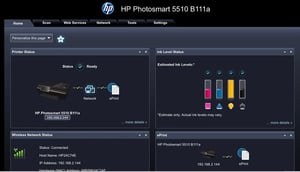The growth and popularity of interactive bandwidth-intensive multimedia applications and the widespread adoption of mobile technology are pushing legacy Wireless Local Area Networks (WLANs) to the edge. The high performing E-series 802.11n WLANs support the rapid growth of mobile devices and the increased popularity of interactive multimedia applications.
HP continues to set the industry standard with the first three-spatial stream 802.1n dual-radio access points. The new HP E-MSM4600 and HP E-MSM466 dual-radio 802.11 APs deliver Gigabit Ethernet client access, offering superior range and coverage with unmatched performance and reliability for today’s on-the-go, tech-savvy workforce.
The Causes of WLANs overload:
- Proliferation of mobile devicesAdvancements in mobile technology, smartphones, transformed IT over the last decade. Annual smartphone shipments are expected to surpass yearly PC shipments by 2012. Laptops and PCs already regularly outsell desktop PCs. Legacy 802.11 a/b/g wireless networks were designed for occasional access and hotspots.
- Explosion of wireless usersToday’s business professional have constant access to wireless use through their smartphones, tablet PCs, notebooks, and laptops. These devices depend on wireless LANs to efficiently and reliably conduct business from any place at any time.
- Growing popularity of interactive multimedia applicationsInteractive rich media applications are used to increase productivity, improve collaboration, and maintain costs. These applications include video conferencing, unified communications, Web conferencing, telemedicine, all bandwidth intensive applications that require high-throughput, low-latency networks.
- Support for mission-critical servicesWireless networks of today are required to enable mission critical services with stringent performance, reliability, and security requirements.
- Challenging RF environmentsWireless LANs are now deployed in hospitals, campuses, and warehouses. Construction materials, building structures, and legacy devices can cause interference and RF challenges for 802.11 a/b/g networks.
Many enterprises are transitioning to wireless as the primary means of network connectivity. Organizations such as healthcare and higher education are foregoing cabling altogether. The IEEE 802.11n wireless networking standard was specifically created to extend the performance and reliability of 802.11 LANs and has the potential to bring wired Ethernet performance to wireless networks and usher in a new era of mobile innovation and productivity.
802.11n Innovations:
-Multiple Input Multiple Output (MIMO) technology
-Channel bonding (allows two 20 MHz channels to be combined to form a single 40 MHz channel, efficiently doubling the transmission channel width)
-2.4 GHz or 5 GHz operation
HP continues to be an innovator, providing the first near Gigabit Ethernet performance in the industry with the HP E-series: HP E-MSM460 and HP E-MSM466 802.11n dual radio access points (APs).
 Key differentiators:
Key differentiators:
- Three-spatial-stream MIMO for industry-leading throughput.
- Closed loop beamforming for improved coverage with less transmission overhead.
- Band steering for optimal WLAN performance
- Concurrent operation in 5 GHz band
- Optimized WLAN architecture
- Backward compatibility for graceful and cost-effective deployment
The HP E-Series 802.11n dual-radio access point series delivers the highest data rates and throughput available in today’s marketplace while offering the best price and performance in the industry.
VLCM has the right solution to meet your specific network needs. VLCM is a certified partner of HP and HP networking. When you team up with VLCM, you’ll benefit from proven services and products. Please contact us for more information.
*Source: HP Technical Whitepaper-"Setting the industry benchmark in WLAN performance"

